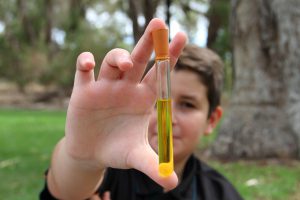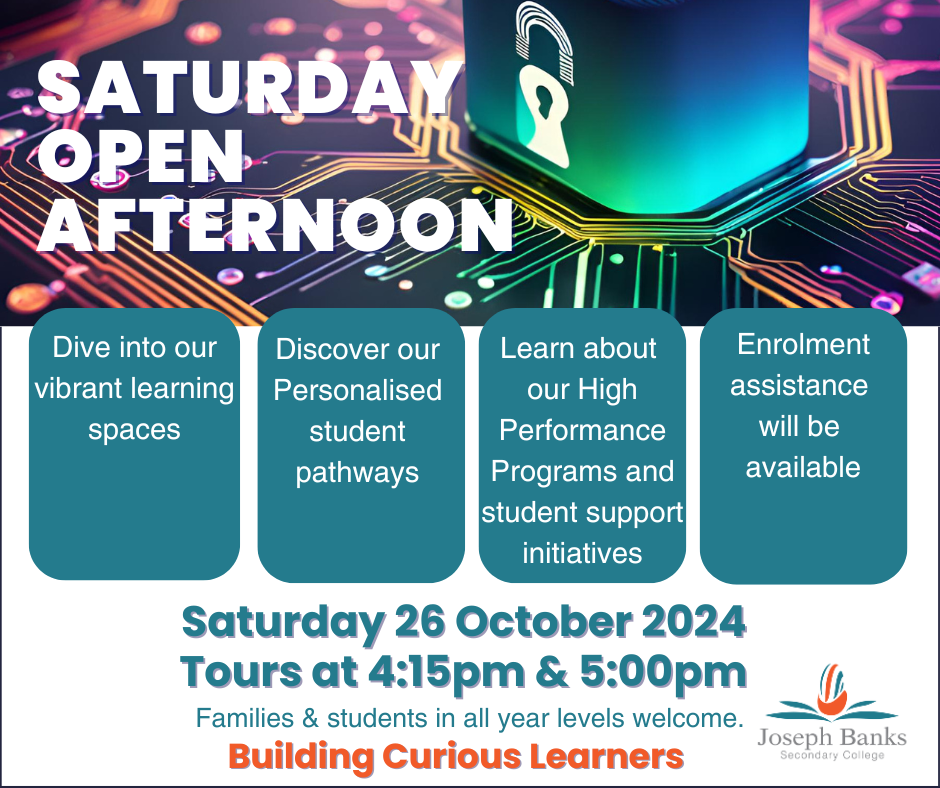Human Biology (ATAR)
Course Code: AEHBY/ATHBY
Domain: Science
Timetable: Semester 1 and 2
Length of Course: 2 Years
Unit Information
Human biology covers a wide range of ideas relating to the functioning human. Students learn about
themselves, relating structure to function and how integrated regulation allows individuals to survive in a
changing environment. They research new discoveries that are increasing our understanding of the causes of
dysfunction, which can lead to new treatments and preventative measures. Reproduction is studied to
understand the sources of variation that make each of us unique individuals. Through a combination of
classical genetics, and advances in molecular genetics, dynamic new biotechnological processes have
resulted. Population genetics is studied to highlight the longer term changes leading to natural selection and
evolution of our species.
As a science, the subject matter of this course is founded on knowledge and understanding that has been
gained through systematic inquiry and scientific research. However, this knowledge is far from complete and
is being modified and expanded as new discoveries and advancements are made. Students develop their
understanding of the cumulative and evolving nature of scientific knowledge and the ways in which such
knowledge is obtained through scientific investigations. They learn to think critically, to evaluate evidence,
to solve problems and to communicate understandings in scientific ways.
An understanding of human biology is valuable for a variety of career paths. The course content deals
directly and indirectly with many different occupations in fields, such as science education, medical and
paramedical fields, food and hospitality, childcare, sport and social work. Appreciation of the range and
scope of such professions broadens their horizons and enables them to make informed choices. This helps to
prepare all students, regardless of their background or career aspirations, to take their place as responsible
citizens in society.
Year 11
Unit One
This unit looks at how human structure and function supports cellular metabolism and how lifestyle choices
affect body functioning.
Cells are the basic structural and functional unit of the human body. Cells contain structures that carry out a
range of functions related to metabolism, including anabolic and catabolic reactions. Materials are
exchanged in a variety of ways within and between the internal and external environment to supply inputs
and remove outputs of metabolism. Metabolic activity requires the presence of enzymes to meet the needs
of cells and the whole body. The respiratory, circulatory, digestive and excretory systems control the
exchange and transport of materials in support of metabolism, particularly cellular respiration. The structure
and function of the musculo-skeletal system provides for human movement and balance as the result of the
co-ordinated interaction of the many components for obtaining the necessary requirements for life.
Students investigate questions about problems associated with factors affecting metabolism. They trial
different methods of collecting data, use simple calculations to analyse data and become aware of the
implications of bias and experimental error in the interpretation of results. They are encouraged to use ICT
to interpret and communicate their findings in a variety of ways.
Unit Two
This unit provides opportunities to explore, in more depth, the mechanisms of transmission of genetic
materials to the next generation, the role of males and females in reproduction, and how interactions
between genetics and the environment influence early development. The cellular mechanisms for gamete
production and zygote formation contribute to human diversity. Meiosis and fertilisation are important in
producing new genetic combinations.
The transfer of genetic information from parents to offspring involves the replication of deoxyribonucleic
acid (DNA), meiosis and fertilisation. The reproductive systems of males and females are differentially
specialised to support their roles in reproduction, including gamete production and facilitation of
fertilisation. The female reproductive system also supports pregnancy and birth. Reproductive technologies
can influence and control the reproductive ability in males and females. Cell division and cell differentiation
play a role in the changes that occur between the time of union of male and female gametes and birth.
Disruptions to the early development stages can be caused by genetic and environmental factors:
inheritance can be predicted using established genetic principles. The testing of embryos, resulting from
assisted reproductive technologies, is conducted for embryo selection, and the detection of genetic disease.
The application of technological advances and medical knowledge has consequences for individuals and
raises issues associated with human reproduction.
Students investigate an aspect of a given problem and trial techniques to collect a variety of quantitative and
qualitative data. They apply simple mathematical manipulations to quantitative data, present it
appropriately, and discuss sources and implications of experimental error. They also consider the limitations
of their procedures and explore the ramifications of results that support or disprove their hypothesis. They
are encouraged to use ICT in the analysis and interpretation of their data and presentation of their findings.
Year 12
Unit Three
This unit explores the nervous and endocrine systems and the mechanisms that help maintain the systems of
the body to function within normal range, and the body’s immune responses to invading pathogens.
The complex interactions between body systems in response to changes in the internal and external
environments facilitate the maintenance of optimal conditions for the functioning of cells. Feedback systems
involving the autonomic nervous system, the endocrine system and behavioural mechanisms maintain the
internal environment for body temperature, body fluid composition, blood sugar and gas concentrations
within tolerance limits. The structure and function of the endocrine system, including the glands, hormones,
target organs and modes of action, can demonstrate the many interactions that enable the maintenance of
optimal cellular conditions. The structure and function of the autonomic nervous system, and its relationship
with other parts of the nervous system, can be linked to the roles each play in maintaining homeostasis of
internal environmental conditions. Comparing and contrasting the endocrine and nervous systems can
highlight the roles of each in homeostasis. Humans can intervene to treat homeostatic dysfunction and
influence the quality of life for individuals and families.
Different body systems have mechanisms, including physical and chemical barriers that protect the body
against invasion by pathogens. The non-specific actions of the body can be aided by the use of antibiotics
and antiviral drugs to counter the invasion or reduce the effect of the pathogen. Specific resistance
mechanisms involve the recognition of invading pathogens and produce long-lasting immunity. Vaccinations
can result in immunity to infection by exposure to attenuated versions of the pathogens.
Unit Four
This unit explores the variations in humans in their changing environment and evolutionary trends in
hominids.
Humans can show multiple variations in characteristics due to the effect of polygenes or gene expression.
The changing environment can influence the survival of genetic variation through the survival of individuals
with favourable traits. Gene pools are affected by evolutionary mechanisms, including natural selection,
migration and chance occurrences. Population gene pools vary due to interaction of reproductive and
genetic processes and the environment. Over time, this leads to evolutionary changes. Gene flow between
populations can be stopped or reduced by barriers. Separated gene pools can undergo changes in allele
frequency, due to natural selection and chance occurrences, resulting in speciation and evolution. Evidence
for these changes comes from fossils and comparative anatomy and biochemical studies.
A number of trends appear in the evolution of hominids and these may be traced using phylogenetic trees.
The selection pressures on humans have changed due to the control humans have over the environment and
survival.
Pathway Information
Tertiary
Workforce
Students undertaking this course may wish to consider tertiary studies in:
- Human Biology
- Medicine
- Nursing
- Paramedical Sciences
This course suits direct workforce entry into the following:
- Laboratory Worker
- Emergency Services
- Armed Forces
Additional Information
Estimated Charges: $80





